US Capitol riot: police have long history of aiding neo-Nazis and extremists
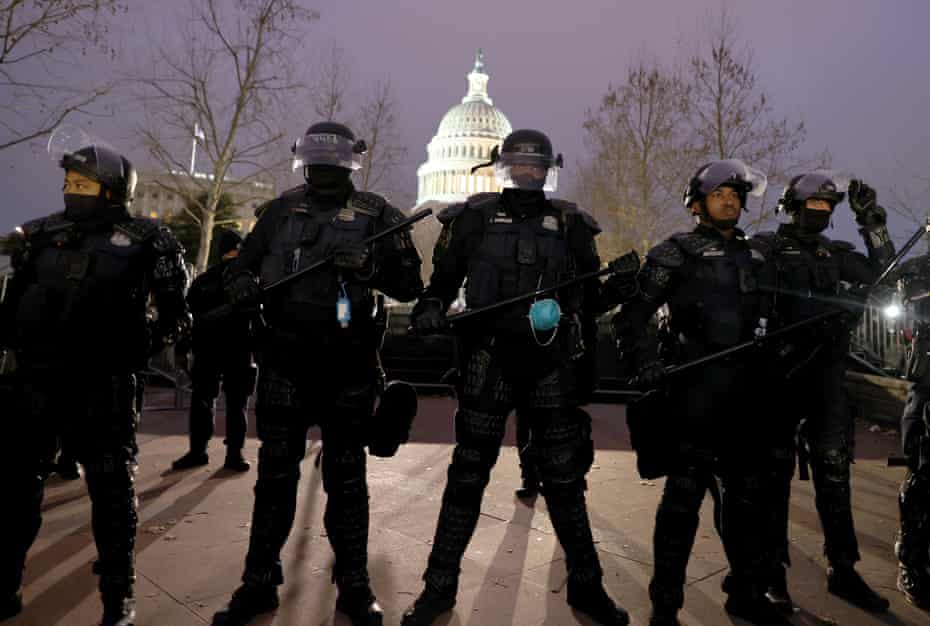
Experts were not surprised that officers were part of the mob, given the ties between some police and white supremacist groups in recent years
Last modified on Sat 16 Jan 2021 06.02 EST
For years, domestic terrorism researchers have warned that there are police departments in every region of America counting white supremacist extremists and neo-Nazi sympathizers among their ranks.
To these experts, and the activists who have been targeted by law enforcement officers in past years, it came as no surprise that police officers were part of the mob that stormed the US Capitol on 6 January. In fact, the acceptance of far-right beliefs among law enforcement, they say, helped lay the groundwork for the extraordinary attacks in the American capital.
“I’ve been trying to ring the alarm since before Donald Trump was elected,” said Cedric O’Bannon, a journalist and activist who was stabbed at a 2016 neo-Nazi rallyin Sacramento and was later targeted by the investigating officer. “It’s nothing new. We’ve seen it getting worse and worse. The law enforcement collusion with white nationalists is clear,” he said.
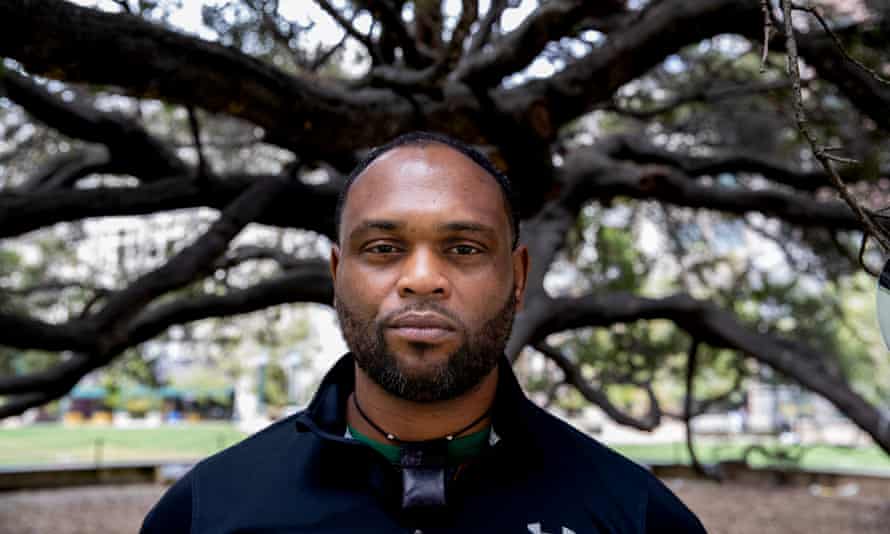
Last Wednesday, Trump encouraged his supporters and far-right groups to march to the Capitol where Congress was sitting. Soon, rioters and militants wearing “Make America Great Again” hats and white supremacist symbols toppled the flimsy barricades on the grounds, pushed past police and stormed the building.
In the days since the attack, which left five people dead and caused lawmakers to hide in fear for their lives, investigations have revealed that a wide range of US law enforcement personnel were represented in the crowd. News reports and other inquiries have identified roughly 30 sworn members of police agencies from more than 12 different states who were present at the Capitol, according to criminal justice news site, the Appeal.
So far, several on-duty Capitol police officers have been suspended for allegedly supporting rioters, and two off-duty Virginia officers were arrested after boasting on social media about breaching the Capitol. A Houston officer caught inside the building has since resigned, and the police departments of New York City, Los Angeles, Chicago, Seattle, Philadelphia and other cities are investigating whether their employees attended.
“These are people who we give guns to, who get specialized training, who have access to sensitive information,” said Vida B Johnson, Georgetown University law professor and expert on policing, “and they took part in a plan to undo the votes for the democratically elected president.”
When police protect neo-Nazis
Extremism experts and survivors of far-right violence have for years cried foul about the close ties between some police and white supremacist groups. These links have escalated under the Trump era, they’ve warned, with numerous examples of police openly protecting far-right organizers, including armed and violent ones.
In June 2016 in Sacramento at least ten people were stabbed and injured at a rally of the Traditionalist Workers Party (TWP), a group that extremism experts have classified as neo-Nazis.
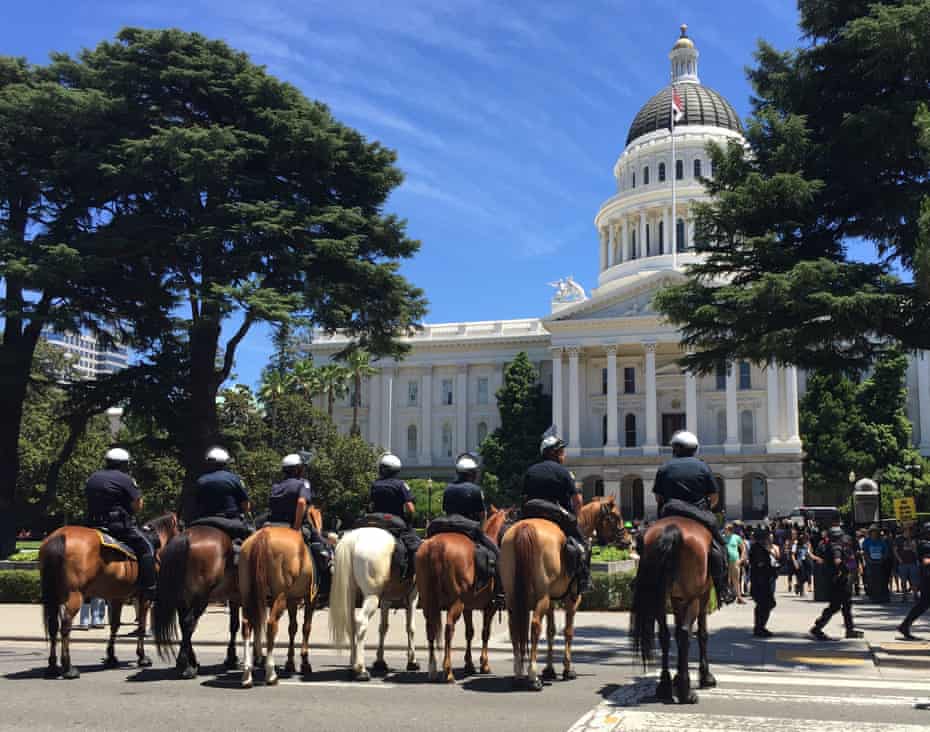
The subsequent investigation, led by the California Highway Patrol (CHP), focused on the anti-fascist counter-protesters injured in the stabbings, with records showing that police worked with white supremacists to identify leftist activists and pursue criminal charges against the stabbing victims.
The lead CHP investigator, Donovan Ayres, repeatedly stated in police records that he viewed the neo-Nazis as victims and the anti-fascists as suspects. In court, he repeatedly called TWP the “permitted party”, since it had a permit for a rally, and in a phone call with a TWP leader, he said, “We’re looking at you as a victim.”
Records show that Ayres formally recommended Cedric O’Bannon, a Black journalist who was filming the events and was stabbed during the demonstration, face criminal charges for conspiracy, rioting, assault and unlawful assembly noting he was “among the protesters”. The officer did not recommend anyone face charges for the stabbing. O’Bannon ultimately was not charged.
Reflecting on the case now, O’Bannon said there should be accountability for the way the officer treated him. “I always think about, has he treated other people in the same way? Is he still doing it now?” Without consequences, officers who sympathize with neo-Nazis are emboldened, he said.
“People of color know this and we’ve been knowing this,” said Mike Williams, a 60-year-old indigenous activist in Sacramento. He was one of three counter-protesterswho faced a criminal trial after Ayres pursued cases against them, alleging they violated the “free speech” rights of neo-Nazis.
The reports that Capitol officers may have enabled or supported the insurrectionists make clear that there are police across the country who are aligned with far-right views, he argued: “They feel like they are going to lose control. This is about keeping systemic racism in place.”
CHP declined to comment on the case, and said Ayres no longer works in the Sacramento region. Ayres did not respond to a request for comment.
In Berkeley, California, in 2017, police worked with a violent and armed pro-Trump demonstrator to prosecute leftist activists over an altercation during a protest. Activists saw the criminal trial as just one of many examples of US law enforcement aggressively targeting leftwing demonstrators and favoring members of the far-right after violent clashes.
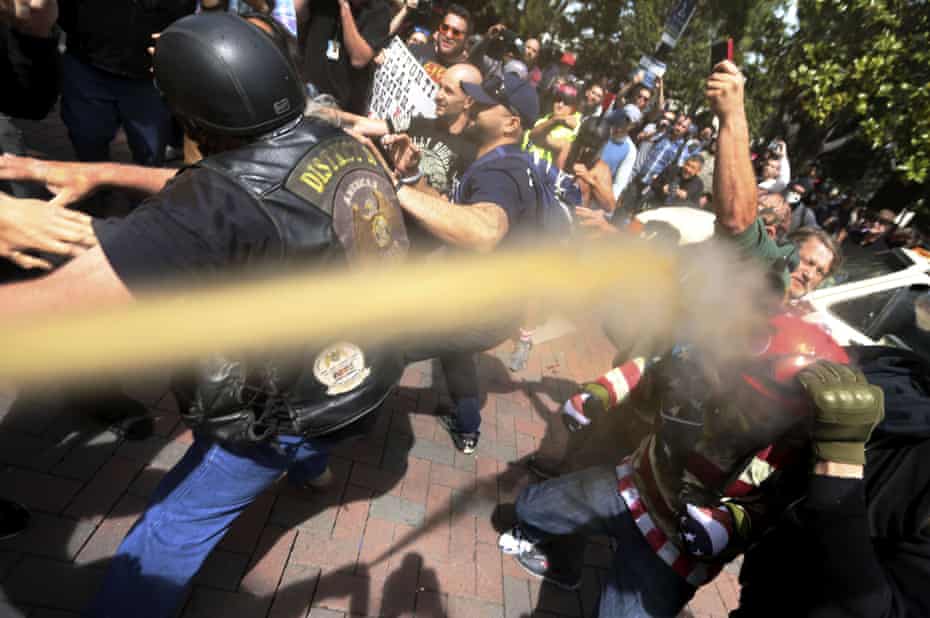
Police often tolerate pro-Trump violence, said Jeff Armstrong, one of the activists who faced charges but was ultimately acquitted: “We knew we didn’t do anything wrong ... but they were trying to put us in prison,” he said.
And in 2019, Rob Mathis, a Black resident of Muskegon, Michigan, exposed a white police officer who had a framed KKK application and Confederate flags in his home. Mathis, 54, discovered the items while touring the home with a real estate agent. The officer was eventually fired, but ultimately won his pension and retiree health insurance.
Mathis said when police initially brought him in to ask about his viral Facebook post showing the KKK form, it felt as if the department was “interrogating” him or treating him like a suspect. Officials told him he should’ve filed an internal complaint and not gone public, he recalled. “They got rid of him because of optics, because of social media.” The officer claimed he was not a KKK member and said he collected memorabilia.
It was happenstance that Mathis uncovered this officer, and he said he worries that police across the country don’t get caught and continue abusing people of color in their communities: “This system is made for white people and by white people. It is about protecting those people and their jobs.”
Muskegon and Berkeley officials did not respond to an inquiry.
‘White nationalists hide in plain sight’
The number of white supremacist extremists within US police forces is unknown, but even relying solely on cases that have been publicized shows the problem is widespread.
Johnson, the Georgetown expert, testified in Congress last year about white supremacist infiltration of police. She found that since 2009, more than 100 police departments in 49 states have faced scandals involving officers making overtly racist statements. In Florida, Alabama, Oklahoma, Louisiana and elsewhere, active police officers have been outed as members of organized hate groups, including the KKK, she found.
And this is likely the “tip of the iceberg”, she said, adding that polls showing that 10% of Americans believe it’s acceptable to hold neo-Nazi views, and that 12% supported the Capitol attack. Those rates are likely higher for police officers, she said, given that officers are disproportionately white and male.
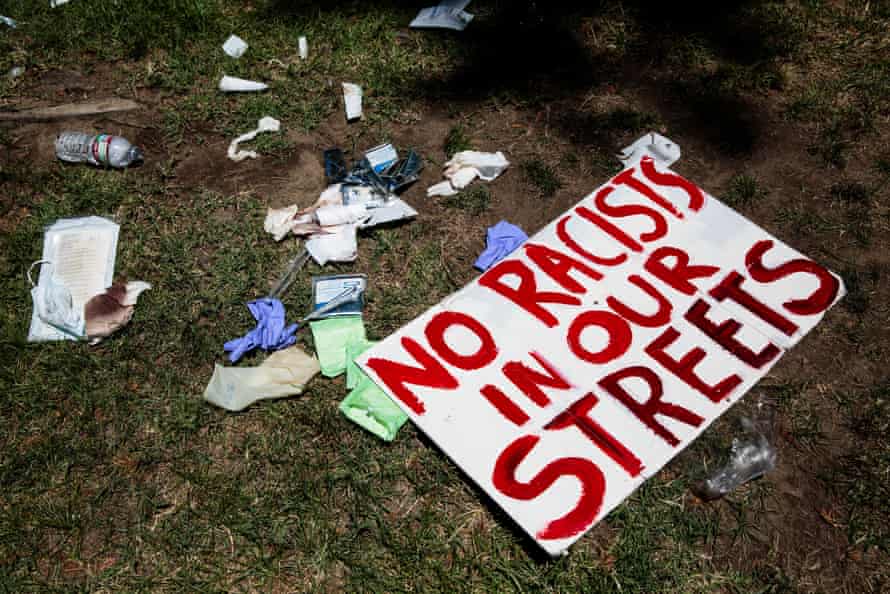
Among the reasons behind the prevalence of white supremacy in police forces is that, according to the repeated warnings of the FBI since 2006, there are members of organized white supremacist groups who have worked to “infiltrate” police agencies. The FBI has said white supremacists are the greatest domestic terror threat, and that the groups often have “active links” to police.
Because of the way policing works in America, it also attracts people with explicitly racist views – giving them a professional license to patrol Black neighborhoods and allowing them to join a system that stops, searches, arrests and prosecutes people of color at disproportionately high rates, experts say.
“It’s very easy for people with white nationalist commitments to hide in policing, to find a place in policing,” said Nikki Jones, professor of African American studies at the University of California, Berkeley. American police departments, Jones said, have in many ways stayed true to their roots of protecting white people: “The way policing is structured, presented and performed allows white nationalists to hide in plain sight.”
Despite the clear evidence of explicit racism within policing, the US has not prioritized investigating white supremacists in law enforcement. This is particularly true under Trump, whose administration has focused its efforts to combat domestic terrorism on targeting Black activists and other leftist groups.
In addition to the federal government’s failures to proactively investigate and weed out white supremacist officers, local laws often make it very difficult to terminate officers, who are backed by powerful unions. Terminated officers are frequently rehired in other departments.
Michelle Monterrosa, a 25-year-old California resident whose brother was killed by police last year, said she was worried about the officers who traveled to the Capitol and who will likely face no consequences.
“These officers participated in this insurrection and participated in this hate,” said Monterrosa, who was recently arrested when she engaged in a peaceful protest. “It’s very scary to know they returned home and put their badge on.”
No comments:
Post a Comment